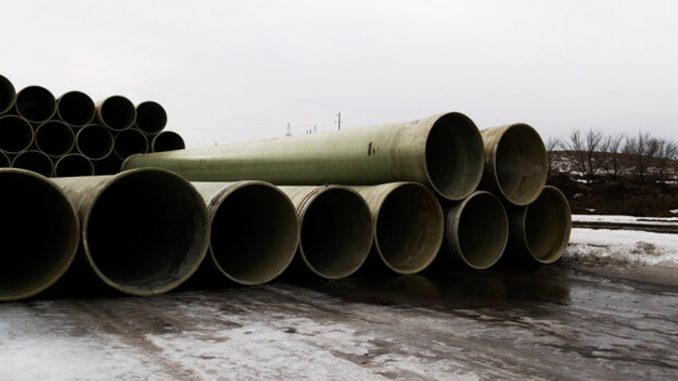
Plastics are public enemy one. Our seas are clogged with single use plastic which is killing the environment and plastic pollution is a major worldwide problem. In amongst all the issues caused by plastic, there is one question not many seem willing to tackle – could the sustainability of plastic pipe actually benefit the environment?
Tin hats on everyone as this a controversial subject. There cannot be any question that some types of plastic are bad.
Everyone knows this, from McDonalds who now serve drinks with paper straws to sporting stadiums selling beer in reusable rather than single use plastic cups.
Businesses everywhere are finding sustainable alternatives for products and packages. Environmental organisations want governments and international bodies to go further and faster with legislation forcing change for the good of the planet.
But what of pipework? Research suggests that pipes can be one of the rare exceptions to the rule of plastic being bad for the environment through its sustainability and durability when compared to other pipe materials.
The benefits of plastic pipe
To understand why plastic pipes can benefit the environment, the obvious starting point is to look at their advantages over steel, copper, iron and other materials.
Top of the list is their resistance to rust. That makes plastic pipes commonplace in water networks, sewer systems and irrigation.
When water is involved and plastic is a possibility, the fact that it will not corrode compared to certain metals gives it an edge.
As a general rule, plastic pipe requires less maintenance and upkeep. There are fewer joints which means less chance of leakage.
Plastic pipe repair is easy to carry out. Lines can undergo numerous repairs without losing integrity over their lifespan, which can be anywhere between 50 and 70 years.
Compare that to the problems currently being experienced in North America where PCCP pipes are suffering catastrophic failures.
Plastic pipes can be installed, put into service and then left for decades without the worry of major leaks, pipework being eaten away or serious degradation of the line.
The installation is also more straightforward than with other pipe materials. Plastic pipes are tough, lightweight, easy to manoeuvre and available in large lengths.
But it is ultimately that aforementioned lifespan that gives plastic pipe its sustainability credentials. Whilst nobody wants plastic which will not degrade floating around in the sea for 60 years, a pipe that will remain in working order for that length of time is desirable.
The environmental impact of plastic pipes
Plastic being plastic, there are still some environmental impact caused by pipes. Fabricating plastic pipelines leaves a carbon footprint and there is the potential for pipes to cause pollution during their creation and installation.
The manufacture of plastic currently equates to 4 percent of global fossil fuel consumption. The plastic pipe industry is already looking at how it can fabricate lines from other carbon sources, including sugar cane.
Should this become possible, then the impact on the environment of the manufacturing process would drop severely. This would further improve the sustainability of plastic pipe.
Another key question surrounding the environmental impact of plastic pipes is what happens to the pipe when the time comes for decommissioning.
Most would assume that miles of pipelines being taken out of service would have a huge impact on the environment.
Plastic pipes however are highly recyclable. The majority of lines are turned into new products or fuel to generate power or heat.
The fact that plastic pipe is so durable means that the removal and recycling of lines happens rarely. Pipelines made of materials with a 25 year lifespan may have to be renewed three times over the course of the life of a plastic pipe.
Less volume is recycled and subsequently less replacement plastic needs to be made as lines survive longer.
Plastic pipes made from recyclable material
Other plastics can be recycled and used in the manufacture of pipes, again boosting their sustainable credentials.
It is common for over 50 percent of the plastic in pipes to have been used previously. Relying on recycled material means that pipelines help to keep plastic out of landfill or finding their way into the sea.
The sustainability of plastic pipe
An assessment carried out by the Flemish Institute for Technological research (VITO) looked at the sustainability of plastic pipe compared to other alternatives.
Amongst the sectors looked at were building services and public pipelines including those carrying wastewater, fresh water and hot and cold water supply.
From cradle to grave, plastic pipes were found to be more sustainable across their lifespan than non-plastic alternatives like cast iron and copper.

Interesting article. However plastics do slowly breakdown in nano and microplastics albeit slowly when buried. Research has yet to determine the environmental impact of this on soil microbes and vegetation and therefore longer term food chain.